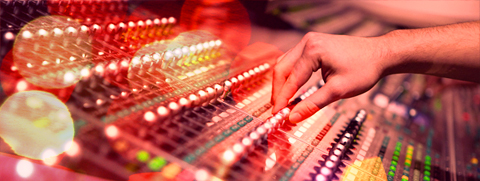As an Audio Engineer at the largest United Methodist congregation in the United States, one of the most common questions I am asked is: “How do you get the best EQ from any individual instrument?” The problem is that there is no absolute answer to satisfy that question. However, I am going to share with you a very handy method I use, called subtractive EQ. It is incredibly helpful if you have begun training your ears to identify sound frequencies, but if you are not quite there yet, this method will work wonders and get you in the right direction.
Using Subtractive EQ: Less Can Be More
Earlier this week, a worship team member came to practice with a lower end acoustic guitar that sounded great acoustically, but not as nice after being plugged in. After noticing the distinct difference, I closed my eyes and listened to the guitar by itself and pictured in my head what didn’t sound right about it. It sounded crisp which was good, and the lower notes sounded equally as good, but the mid-range, the mid-levels were just too much to handle. That was it. I needed to find the mid-sounds that were causing the issue and pull them out of the guitar. Sounds easy enough, but the problem is that those mid frequencies are really hard to distinguish!
How do I determine which frequencies I don’t like? Simple. I go to the EQ on my console, and push the mid-levels even louder! This allows me to uniquely identify areas of the level that don’t sound correct. I sweep the frequency around, listening very carefully until I find the mid-range that is the perpetrator. In this moment, the guitar sounded basically as nice as a cardboard box. In this particular guitar, the horrible level was at 2kHz. Once identified, I then take the 2kHz level that I just pushed up, and I pull it all the way out, leaving only the frequencies that are acceptable. Now the guitar sounded nice and balanced. This is called subtractive EQ, a very helpful technique that comes in handy when your ears can distinguish the frequencies.
The more you practice, the faster you will get. Over time, your ears will learn how to identify frequencies faster. If you have an iOS or Android device, there is an incredible tool you can download called QuizTones. It is an awesome app that I use all the time to help train my ears to identify frequencies. It will cost you $4.99 in the app store, but it is definitely worth it. Check it out here: quiztones.com

